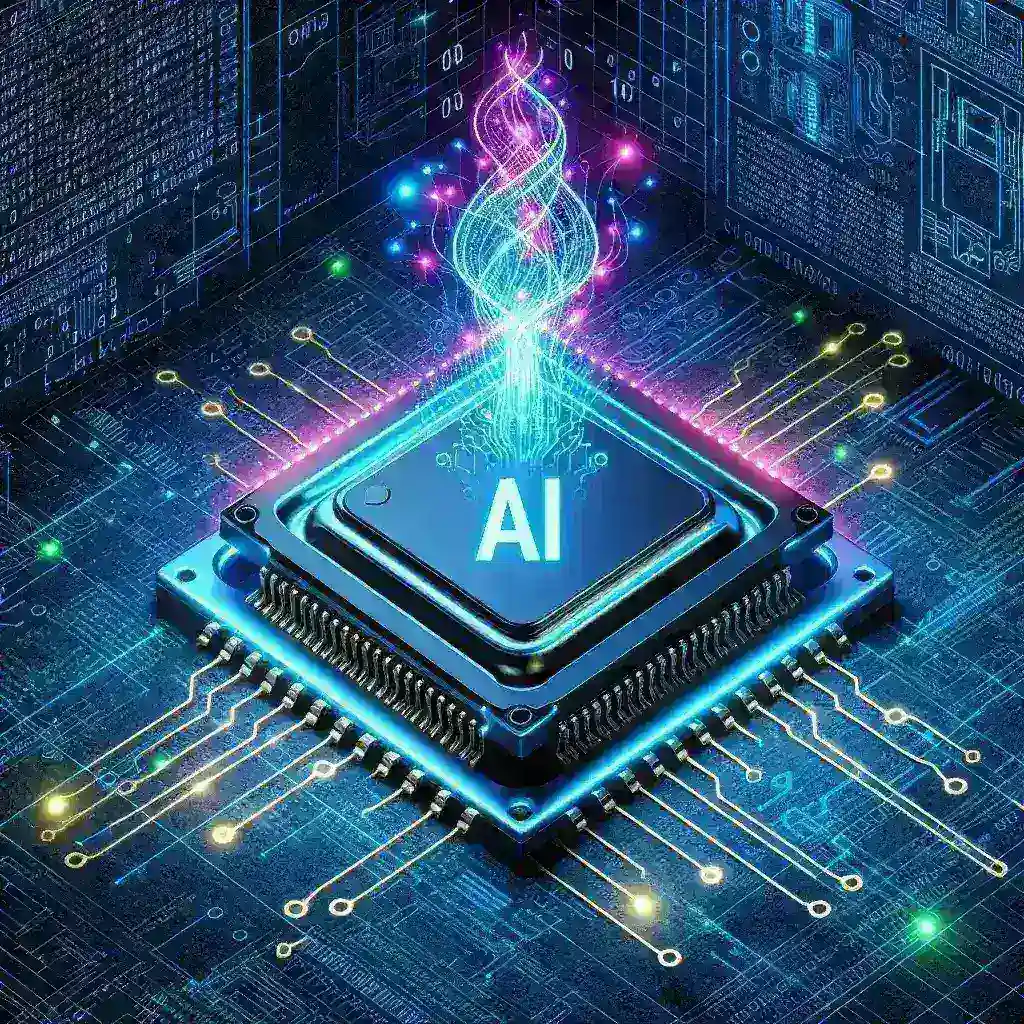
Apple’s Generative AI Revolution: Reshaping Custom Chip Design
Apple’s Generative AI Revolution: Reshaping Custom Chip Design
Apple’s relentless pursuit of technological innovation has led them to explore the uncharted territories of generative artificial intelligence (AI) in the intricate world of custom chip design. This isn’t merely an incremental improvement; it’s a paradigm shift with the potential to drastically alter the landscape of silicon development, impacting everything from the performance of iPhones and Macs to the capabilities of future Apple products.
For years, Apple has distinguished itself by designing its own chips, a strategy that has granted them unparalleled control over performance, power efficiency, and integration. This vertical integration, while demanding significant resources and expertise, has yielded remarkable results. However, the complexity of chip design is exponentially increasing. The number of transistors on a chip grows at an astonishing rate, making the design process both time-consuming and incredibly challenging.
The Generative AI Advantage: Beyond Traditional Methods
Traditional chip design relies heavily on human expertise, a process involving meticulous planning, numerous iterations, and extensive simulation. While incredibly effective for past generations of chips, this approach faces increasing limitations in the face of modern complexities. Generative AI offers a novel solution, acting as a powerful tool to assist engineers, rather than replacing them.
Imagine a system that can autonomously generate multiple variations of chip designs, each tailored to specific performance parameters and constraints. Generative AI can explore a vast design space far exceeding the capabilities of human designers, identifying optimal architectures and configurations that may have otherwise remained undiscovered. This isn’t about replacing human ingenuity but augmenting it, empowering engineers to tackle unprecedented levels of complexity with increased efficiency.
This approach offers several key advantages:
- Accelerated Design Cycles: Generative AI can drastically shorten the time required to design and iterate on chip architectures, allowing for faster product releases.
- Enhanced Optimization: AI algorithms can explore a multitude of design options, identifying optimal configurations for power efficiency, performance, and area.
- Innovation Catalyst: By exploring unconventional design spaces, generative AI may uncover novel architectures and functionalities, pushing the boundaries of chip design.
- Reduced Costs: While initial investments in AI infrastructure are substantial, the long-term cost savings from faster design cycles and improved optimization can be significant.
The Challenges and Considerations
While the potential benefits are substantial, the integration of generative AI into chip design presents significant challenges:
- Data Requirements: Training effective generative AI models requires massive datasets of chip designs, specifications, and performance data. Acquiring and curating such data is a considerable undertaking.
- Model Validation: The output of generative AI needs rigorous validation to ensure functionality, reliability, and compliance with stringent industry standards. Human oversight remains crucial.
- Intellectual Property Concerns: Protecting intellectual property within a generative AI framework poses unique challenges, requiring careful consideration of data security and model ownership.
- Skill Gap: The successful implementation of generative AI in chip design requires a workforce with expertise in both chip design and AI/machine learning. Bridging this skill gap will be essential.
A Glimpse into the Future: Apple’s Vision
Apple’s foray into generative AI for chip design is a strategic move, reflecting their forward-thinking approach to innovation. It’s reasonable to speculate that this technology could significantly impact their future product roadmap. Imagine iPhones with even longer battery life, Macs with unparalleled computing power, and entirely new product categories enabled by innovative chip architectures discovered through AI.
The long-term impact extends beyond Apple’s own products. If successful, this approach could set a new standard for the semiconductor industry, influencing the design processes of chip manufacturers worldwide. The resulting improvements in efficiency and innovation could have far-reaching consequences, potentially accelerating technological progress across various sectors.
Beyond the Chips: Broader Implications
The implications of Apple’s work extend far beyond the confines of custom chip design. The successful integration of generative AI into such a complex and technically demanding field could serve as a powerful proof-of-concept, demonstrating the transformative potential of AI in other engineering disciplines. From materials science and aerospace engineering to automotive design and drug discovery, the applications are virtually limitless.
However, the ethical and societal implications also demand careful consideration. As with any powerful technology, responsible development and deployment are paramount. Addressing concerns around job displacement, data privacy, and algorithmic bias will be crucial to ensure that the benefits of generative AI are widely shared while mitigating potential risks.
In conclusion, Apple’s exploration of generative AI in custom chip design represents a significant milestone in the evolution of silicon technology. While challenges remain, the potential rewards are immense. The success of this endeavor could reshape not only Apple’s future but also the broader technological landscape, ushering in a new era of innovation propelled by the power of artificial intelligence.
This exploration is not just about faster chips; it’s about pushing the boundaries of what’s possible. It’s about leveraging the power of AI to solve some of the most complex engineering problems and ultimately, to create a more technologically advanced future. The success of this initiative will be closely watched by the entire tech industry and beyond, as it signifies a major step towards a future where AI plays a pivotal role in the design and development of cutting-edge technologies.
For more information on AI in chip design, you can explore resources such as IEEE and ACM. These organizations provide valuable insights into the latest research and advancements in this rapidly evolving field.
